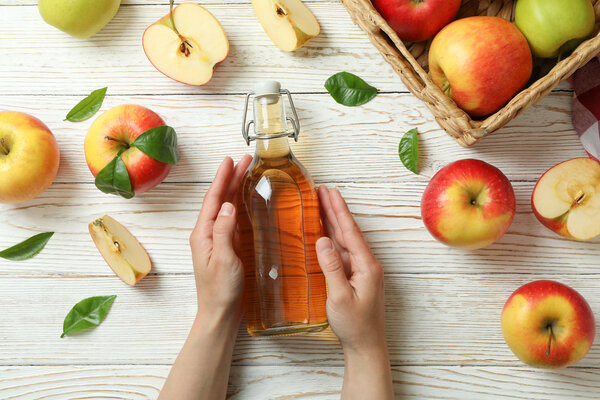Forest bathing and herbal recipes
Immerse yourself in the world of forest bathing and discover the healing powers of nature.
Whether on a guided hike or a special workshop – with relaxation and an experience of nature as the focus.
Forest bathing - what is it?
Forest bathing or Shinrin Yoku is a nature-based method that originated in Japan in the 1980s. The aim is to relax in and with nature, to slow down and disconnect temporarily from the stress of everyday life. With the help of exercises, you literally immerse yourself in the forest atmosphere.
Terpenes in the fresh forest air flood our lungs. These chemical compounds are responsible for the characteristic smell and taste of many plant species. A whole series of scientific studies have shown that forest bathing exercises can actually increase physical and mental well-being. The focus is entirely on the senses. It's all about seeing, hearing, feeling, smelling and tasting the forest, building a mindful and appreciative relationship with nature. The result is leaving the stress of everyday life behind and to be allowed to be completely neutral; forget your phone and take time to simply be.
Forest bathing/Shinrin Yoku expert and initiator – TEH-Herbal specialist & hiking guide, Maria Leutgeb
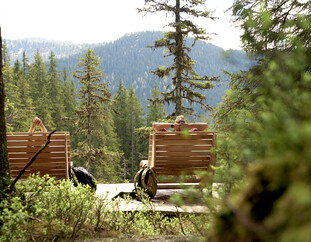
Let yourself be guided:
A dumping ground for distractions
Here at the portal, we leave behind worries, stress and everyday problems, and deactivate mobile phones for this valuable time.
- We try to reflect on the senses.
- Take some conscious breaths.
- Perceive 5 things in the environment with your eyes and describe them to yourself.
- Listen to 4 sounds of nature, where do they come from?
- Feel 3 things haptically, a branch, cone or stone.
- Smell 2 different scents through your nose.
- Taste 1 thing, maybe a pine needle.
A connection to nature that we feel is something that relaxes us.
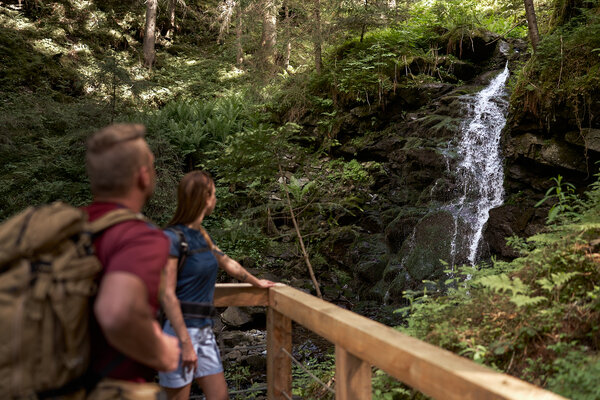
Imagine coming from somewhere else, you don't know the forest and nature at all.
Take your time and explore everything very carefully, a tree, a stone, an ant, plants or the bird that is just showing off its flight skills.
The core task is to perceive the environment and to think about your own senses.
Look around! What can you discover?
What colours do you see, what do you smell?
Feel the wind, take a twig, stone or piece of wood or bark and feel it.
Taste a spruce needle - What does it taste like?
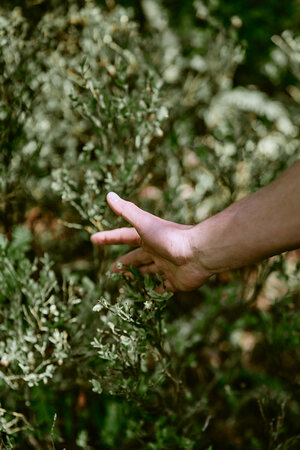
Conscious walking is a wonderful mindfulness exercise that allows you to bring your attention back to the present and perceive the forest and nature around you more intensely in every moment.
Start walking slowly and focus your attention on the soles of your feet. Try to feel the texture of the forest floor. How does the surface feel? Observe for a while whether you touch the forest first with your heels or with your toes. Gently feel the ground under your feet.
Now focus your attention on your legs, upper body and arms. Do you feel how playfully the individual body parts work together as you move slowly and freely through the forest?

This exercise will help you perceive nature and its incredible beauty.
Place the frame at a selected spot on the ground and observe the treasures in your frame as you would an artwork. Now let the image that appears in the frame reflect on you.
Look at the artwork from different perspectives. What do you see? Surface, shapes and colours.
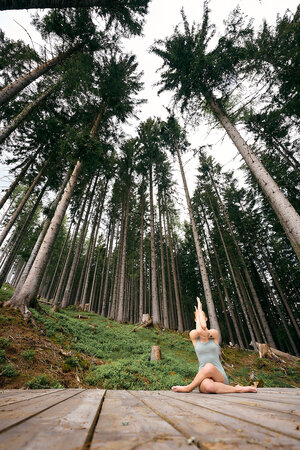
Most of us wear shoes all the time and can't even imagine or remember the last time we went barefoot.
Studies show that when we walk barefoot our body absorbs excess electors from the earth's surface into our system, thereby binding free radicals in the body. This reduces stress and is extremely beneficial to health.
Walking barefoot connects us with nature, massages the foot reflex zones, promotes blood circulation and stimulates metabolism. Move slowly, focus your attention on the soles of your feet and imagine yourself absorbing the healing and soothing energy of Mother Earth step by step.
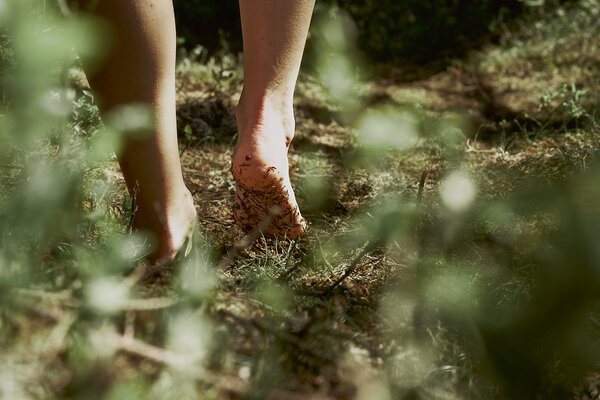
What does a tree need to survive? In order for a tree to survive, it needs light, water and carbon dioxide from the atmosphere to carry out photosynthesis. In return, it releases oxygen. What do we need to survive? Water, food and oxygen. The exchange of give and take. A symbiosis that we both need to survive.
You are invited to choose a tree of your choice. Sit down, lean against it or stand under it. Start breathing consciously, and become aware of this symbiosis of give and take.
Conclusion – We have had a chance to experience all of our senses.
You are invited to a small ceremony. We would like to thank our hosts Forest and Nature for the valuable stay and wonderful experiences in the here and now.
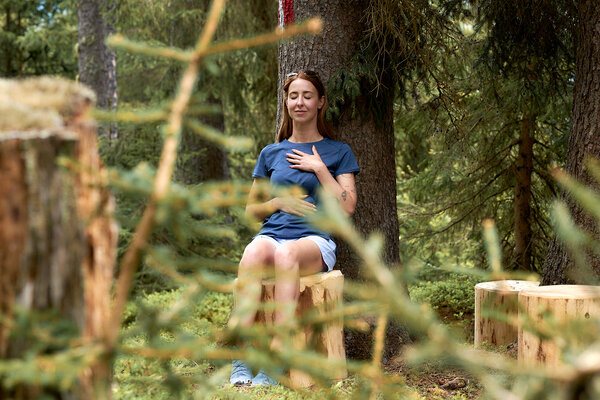
Recipes
Forest tea
Simmer a few spruce, fir and larch needles gently for 5-10 minutes, strain and enjoy.

Spruce salt
Spruce needles are available all year round, so you can easily make small quantities again and again. Grind a good rock salt (available in health food stores) with spruce needles in a mortar, then dry, grind again briefly and fill into screw-top jars.
- Use as a foot bath or full bath
- For inhalation in case of colds via a facial steam bath
- To flavour your dishes such as salads and fish
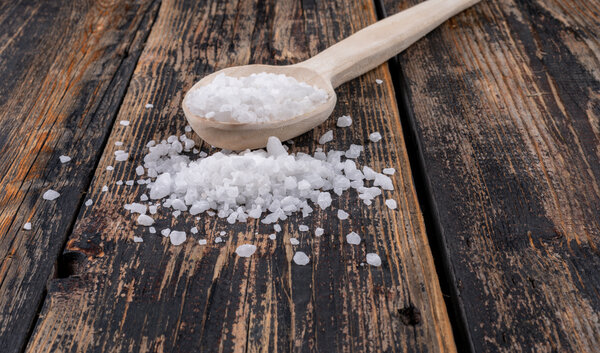
Forest – Cookies
- 300 g spelt flour
- 1/2 teaspoon baking soda
- 1/2 teaspoon salt
- 175 g soft butter
- 150 g cane sugar
- 1 pinch of vanilla
- 2 eggs
- 4 tablespoons of fresh, finely chopped spruce and/or fir, pine, larch needles
- Sift the flour, baking soda and salt into a bowl. Mix butter, cane sugar and vanilla in another bowl until fluffy, gradually fold in the eggs. Fold in 3/4 of the finely chopped needles and the flour mixture.
- Cut out small balls with a teaspoon, shape them into a round shape and place them evenly apart on a baking sheet. Flatten a little if desired and sprinkle with the remaining needles. Bake at 160° for 10–12 minutes until golden brown.

Sprout butter or cream cheese spread
Season the butter or cream cheese with salt, pepper and lemon zest and mix with fresh sprouts of spruce, fir, larch and pine. Depending on taste and availability
- As a spread for snacks or barbecues
Both can be wonderfully frozen, portioned into small portions or formed into a roll.
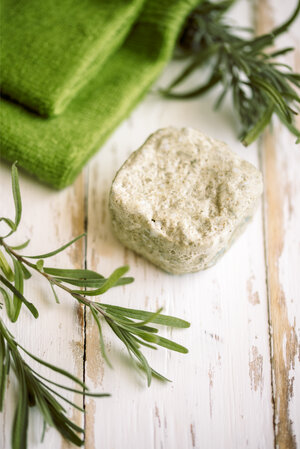
Spruce syrup
Layer spruce shoots with cane sugar in a screw-top jar, pour a dash of boiling water over it depending on the size of the glass, screw the top up and place it on the window sill. The sugar dissolves completely. Let it stand for a while.
- Enjoy as a syrup diluted with water
- Mix a teaspoonful into a salad marinade
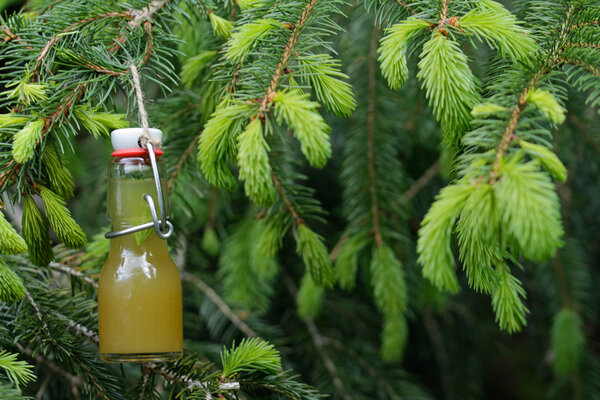
Spruce resin
Tree pitch serves the tree as a wound plaster for injuries of any kind. Due to its anti-inflammatory effect, the pitch ointment is indispensable in the medicine cabinet. We also use spruce resin as incense for smudging, with the same effect.
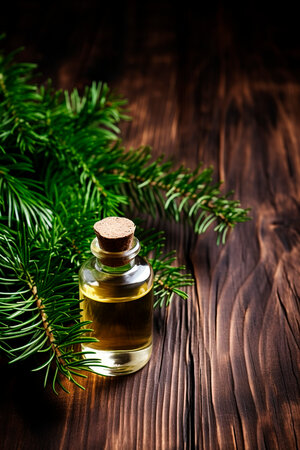
Red-edged tree fungus
Tree fungi are generally used for decoration or in folk medicine
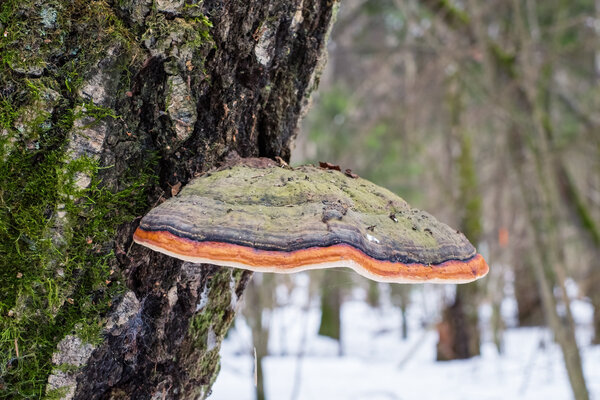
Smudging
A very traditional practice here, especially in rural areas. You can make different types of incense.
On warmers for scenting a room, on charcoal for rituals, incense in nature, with no limits to the imagination.
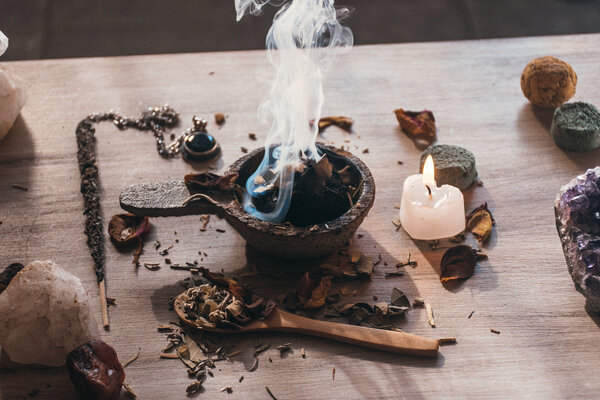
Incense mix "Waldheimat"
- 2 tablespoons needles of spruce, fir, pine, mountain pine,
- stone pine and pine
- Use according to taste and availability
- 2 tablespoons each of organic orange peel and apple peel
- 1 teaspoon of spruce resin
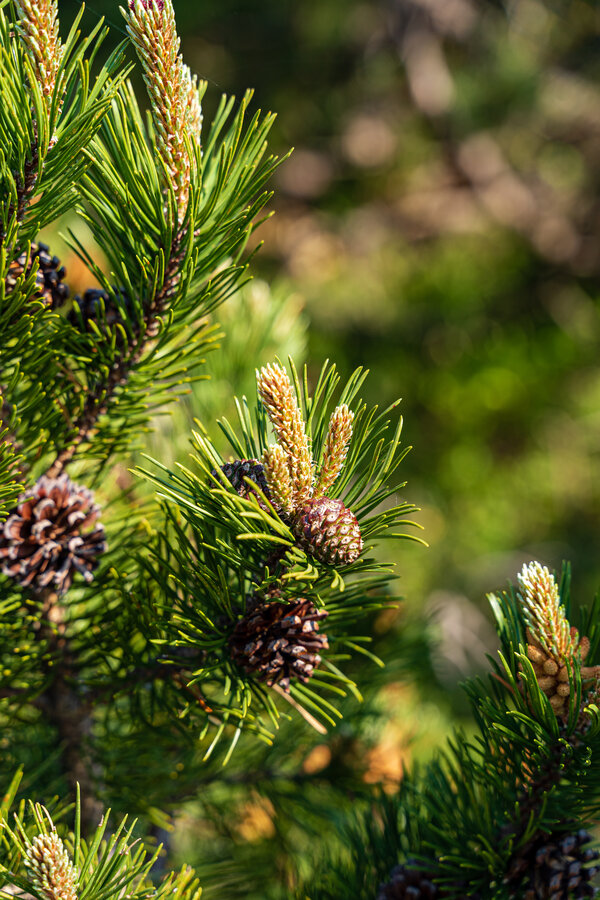
The story of the spruce
The Germanic tribes revered the spruce as a protective tree, a tree of life and mother tree. With its straight, orderly form, it is said to bring clarity and show the way of life. With its pyramid shape, it grows towards the sky and bundles life energy for all those who need the power of the tree.
The "bread tree of forestry" was planted in monocultures in many places as a non-native tree species. Thanks to its relative simplicity and rapid growth, the versatile wood can quickly be turned into cash– and this is the case in Leogang.
A little history: The reason for planting the spruce as a monoculture traces back to White gold – salt – since Celtic times (beginning about 2000 years ago). In salt extraction in Hallein, the mountain salt was dissolved with water and transported via pipes to pans. There, the water from the brine was evaporated using fire (a process which required a lot of wood), leaving behind pure salt – the white gold. The underground salt tunnel in Hallein jutted out into Bavarian territory, so a solution was found. Since the Bavarians had already cut down their forests (for wood for the pans) in the salt town of Reichenhall, they urgently needed more wood. Thus an exchange solution emerged – salt from Hallein for wood from the Saalach basin. An agreement was drawn up – the so-called Bavarian-Austrian Salt Treaty of 1829. Spruce was the ideal wood for this. Fast, straight growth - a very light wood - ideal for drifting (the transport method in the waters of the Saalach) - ideal heat production. Hardwood, on the other hand, was too heavy, could not be drifted because of its branches and produced too much heat. In Leogang and in all communities near the Saalach, spruce trees were therefore planted on a large scale in monoculture. This brought prosperity for the nobility and the royal houses of the time. The wood is highly valued for furniture making and as firewood. The ancient Greeks revered spruce wood for the construction of ships, which is why the spruce was also dedicated to Poseidon, god of the sea. For the Romans, the fast-growing spruce was a symbol of hope, but also associated with mourning. For example, spruce branches were often used as funeral decorations. In Bavaria and Austria, the spruce is also traditionally used as a maypole and represents strength and fertility. Nowadays, the spruce has become a "victim" of rapid forestry and climate change (drought, water shortages, storms) and the bark beetle is also causing problems. If a spruce can defend itself well against the bark beetle, then its trunk is full of resin droplets. This drowns the bark beetles as they drill. If you see this in a tree, then you know that the tree has done this itself.
Although still widespread, spruce monocultures are increasingly giving way to a healthy mixed forest. Each tree is unique, unique in its form of expression, its shape and its growth habit. If you stand in front of a group of spruces, you don't usually see an individual character, you don't necessarily see the individual tree. If, on the other hand, you see a solitary evergreen spruce, its unobstructed beauty becomes visible; these spruces are also called "kings of the forest".
Medicinal uses of the spruce – also known as the good mother of the forest. Our ancestors believed that conifers in particular were able to relieve them of diseases.
Today we know that if you inhale and breathe forest air, it is a kind of healing air, especially in a coniferous forest, good for staying healthy or returning to good health. More than 150 years ago, Sebastian Kneipp recommended that his patients with bronchitis, asthma and lung diseases take regular long walks in coniferous forests. He suggested that they form small balls from fresh spruce resin, suck them and swallow them. For Kneipp, the forest and the fresh enjoyment of resin was the easiest way to strengthen the lungs and kill pathogens. In times like these, the spruce is also repeatedly called the "Corona tree" and rightly so!
"Here, Mrs. Tree, I’m bringing you my gout" – the act of symbolically requesting to be allowed to hand over one's own suffering in gratitude and hope for recovery used to be commonplace. The spruce benefits us humans greatly.
The needles renew themselves every 6-7 years. Spruce needles, boiled as tea, were valued as a medicinal tea for poor people for respiratory diseases and much more. A supply of spruce pitch was present in every household - this was also often used as forest incense. The spruce as incense: The resin – the blood of the tree, is produced when a tree is damaged on the bark, also known as tree wounds. These wounds never heal completely – a resinous scar remains on the bark. Harvest the resin carefully and with caution! For incense, the resin - the gold of the forest - and the resin-rich needles are used, which should be well dried for use, otherwise the turpentine contained in the resin burns unpleasantly in the nose. Incense has a clarifying, grounding effect, orders the mind and awakens it for new deeds... Spiritual messages – what does the spruce want to teach us? The powers of the spruce want to teach us fundamentally to trust life, those who radiate trust are able to inspire others more easily. It helps us find our way back to basic trust. Spruce trees are ancient friends of humans and help rebuild trust and heal old wounds and injuries. The spruce encourages us – dare to do it... to start something new with a deep level of trust. Its job is to lift your spirits. In the forest, surrounded by spruce and coniferous trees, you remember the deep breath that unfolds serenity in you and around you.
The spruce helps us in critical situations, is here for us all year round, and is beneficial to us in lots of ways...
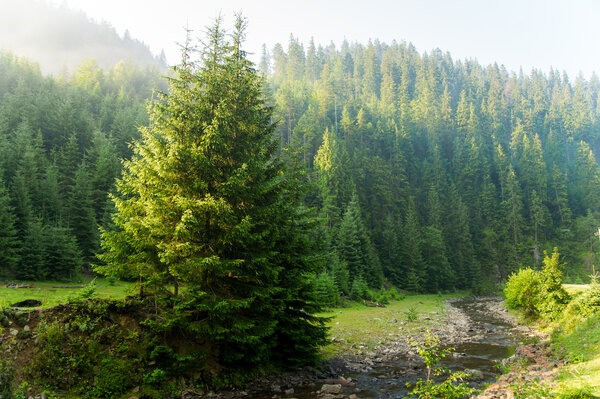
Recipes from our Herb Garden
The herb & alpine plant trail shows the diversity of local herbs and
offers the following weekly workshops and offers.
The products that are made are appropriate to the season.
Recipes by Herbal Educator – TEH Practitioner, Sonja Schwaiger
Mother tincture from fresh plants
A mother tincture is a mixture of bits of fresh plant and alcohol and is used to alleviate minor ailments. The tincture is prepared using a mix ratio of 1 part fresh leaves, flowers and cleansed roots to 2 parts alcohol.
For example: 125 g fresh plant ingredients and 250 ml alcohol (corn schnapps, vodka or spirit).
Preparation:
The herbs are best cut into small pieces with a ceramic knife and placed in a wide-necked jar that is infused with 40%–90% alcohol. Close the jar using a cloth or slightly open lid and shake once a day at room temperature for four weeks.
Then strain with a very fine sieve or coffee filter and pour into dark bottles, label and store in a dark place. There they can be kept for at least 3 years.
- Valerian tincture from roots is helps those with difficulty getting to sleep.
- Tarragon tincture has a stimulating effect on the stomach.
- Nasturtium tincture has a supportive effect on flu and colds.
- Dandelion tincture relieves the liver and gall bladder.
- Melissa tincture is effective against nervousness and headaches.
Application:
Take 10-20 drops pure or with a glass of water 3 times a day.
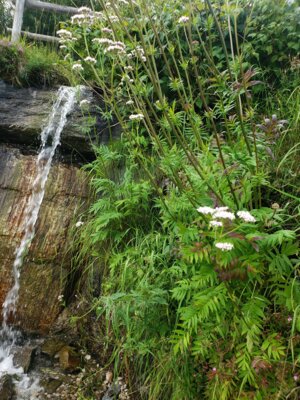
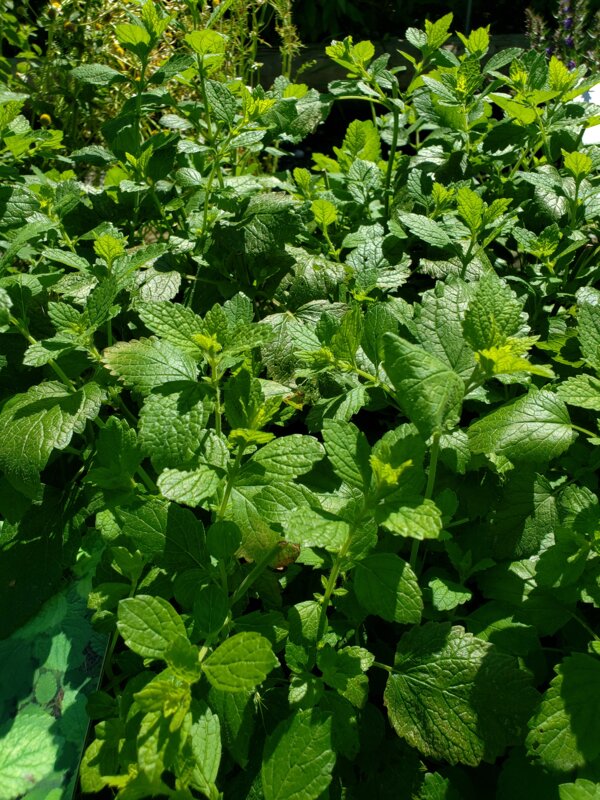
St. John's wort oil (red oil)
St. John's wort is also called arnica for the nerves. The oil is very good for treating scar tissue, burns, and nerve pain. But please note, do not use in the sun!
Preparation:
Use fresh flowers and buds of St. John's wort in a ratio of about 1:4. Depending on your preference, you can use a high quality olive oil, almond oil or sunflower oil. Put the fresh flowers and buds into a screw-top jar and pour in an oil, until all the flowers are covered. Place in a warm place and shake once a day. After 6 weeks, sieve the red-coloured oil through a fine sieve or coffee filter. Pour into dark bottles and store in a dark place.
Application:
St. John's wort oil can be applied directly to the skin. It can also be used as a bath additive or ointment base.
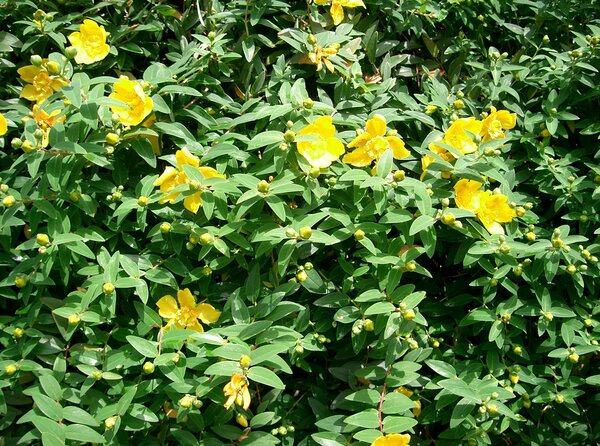
Houseleek ointment
Almost everyone knows the use of aloe vera for burns, sprains and as an after-sun gel. But our local houseleek offers the same properties. Owing to its limited shelf life, houseleek ointment should only be prepared in small quantities.
Preparation:
Put 1 teaspoon of beeswax in a glass placed in a water bath and melt while stirring. Stir in 4 tablespoons of St. John's wort and 4 tablespoons of pureed houseleek. Remove the glass from the water bath and allow to cool while continuing to stir. Store the ointment in a cool place.
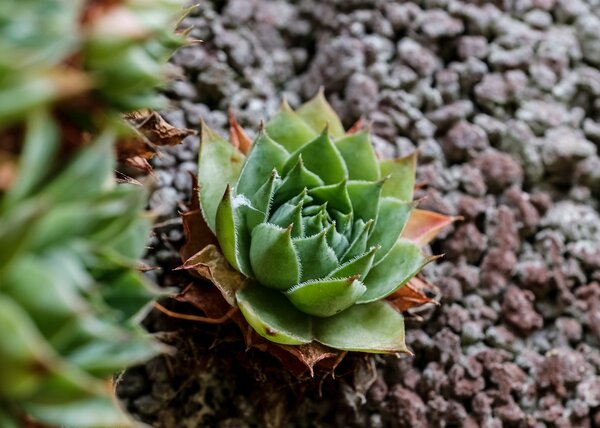
Wild herb pesto
Ingredients:
- 200 g wild herbs (e.g. yarrow, goutweed, ribwort, lady's mantle)
- 150 ml safflower oil
- 25 g roasted pumpkin or sunflower seeds
- 25 g Parmesan cheese
- Up to 1 teaspoon salt
Preparation:
Roast the seeds without fat in a non-stick pan, let them cool then grind them up in a mortar. Cut the wild herbs into very small pieces and mix with the oil and other ingredients to form a creamy mass. Pour this into jars. Without the seeds and Parmesan, the pesto can be kept refrigerated for one year.
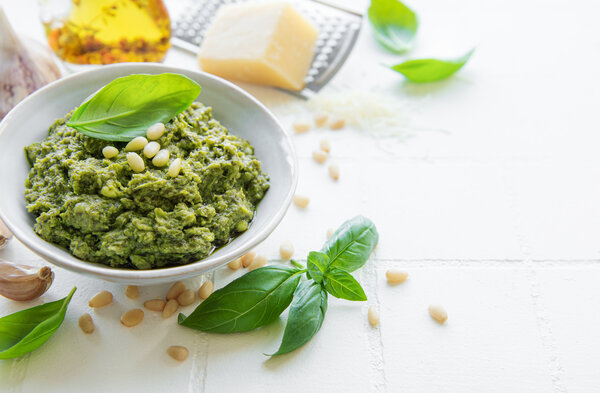
Herb salt
The herb salt with fresh herbs is mixed in a ratio of 1:2. For example, 100 g of fine or coarse salt (depending on your preference) and 50 g of fresh herbs. Cut the fresh herbs into small pieces with a ceramic knife and mix with the salt. Then spread the salt mixture on a baking tray and let it dry at room temperature for 1-2 days. You can also dry the salt with a slightly open oven at 40 degrees. After that, grind it up in a mortar or coffee grinder. For dried herbs or flowers, use a ratio of 1:3 for the salt mix.
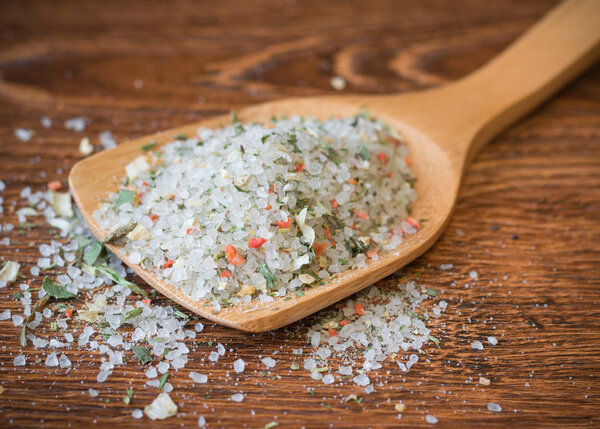
Shower scrub with dried herbs
A shower scrub can be mixed together differently according to its intended use.
Ingredients:
- 6 tablespoons cane sugar
- 3 tablespoons dried herbs
- 1 tablespoon oil (almond oil, wheat germ oil, cold-pressed sunflower oil)
- 1 teaspoon baking soda
- Juice of half a lemon
Preparation:
Mix all the ingredients with the desired herbs and pour into a screw-top jar.
Application:
Apply a small amount of the sugar scrub to wet skin, leave on and then rinse. The sugar peeling promotes blood circulation and detoxifies.
- Rosemary has an invigorating effect.
- Sage and mint have a cooling effect.
- Thyme, marshmallow and ribwort plantain help against colds.
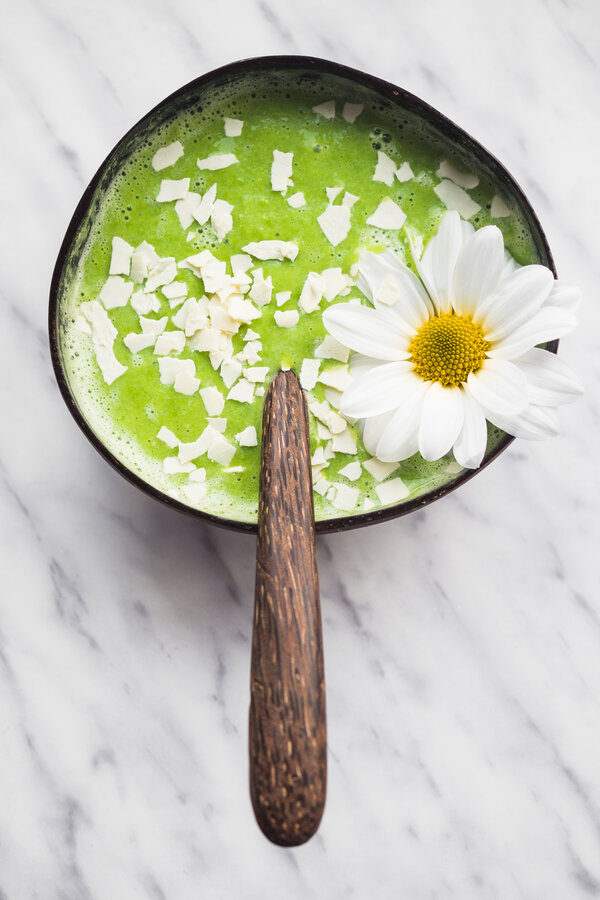
Oxymel - Sour Honey
Oxymel is a mixture of honey and vinegar. For healing purposes, it can be prepared with a wide variety of herbs and fruits.
Ingredients:
- 3 parts honey
- 1.5 parts naturally cloudy apple cider vinegar
- 1 part fresh or dried herbs, fruits
Method:
First, pour the vinegar into a sterilised screw-top jar and mix with the honey. Then add finely chopped herbs or fruits. Place the sealed jar in a dark place for two to four weeks, shaking occasionally. When this time is up, transfer the Oxymel to a dark bottle. Can be kept for up to a year.
Application:
As a cure, drink one to two tablespoons of Oxymel with a glass of water. As a thirst quencher, dilute two tablespoons with half a litre of water or mineral water.
Herbal suggestions:
Gastrointestinal – Gall bladder – Liver
Dandelion root and leaf, feverfew, peppermint, yarrow, chicory, wormwood, mugwort, mountain savory, oregano, calendula, hyssop, chamomile, fennel, caraway
Nervous system
Valerian root, golden balm, hops, St. John's wort, lavender, lemon balm, oregano, lemon verbena
Immune system
Hazelnut leaves, evening primrose, coneflower, thyme, elderflower, nasturtium, blackcurrant, thoroughweed.
